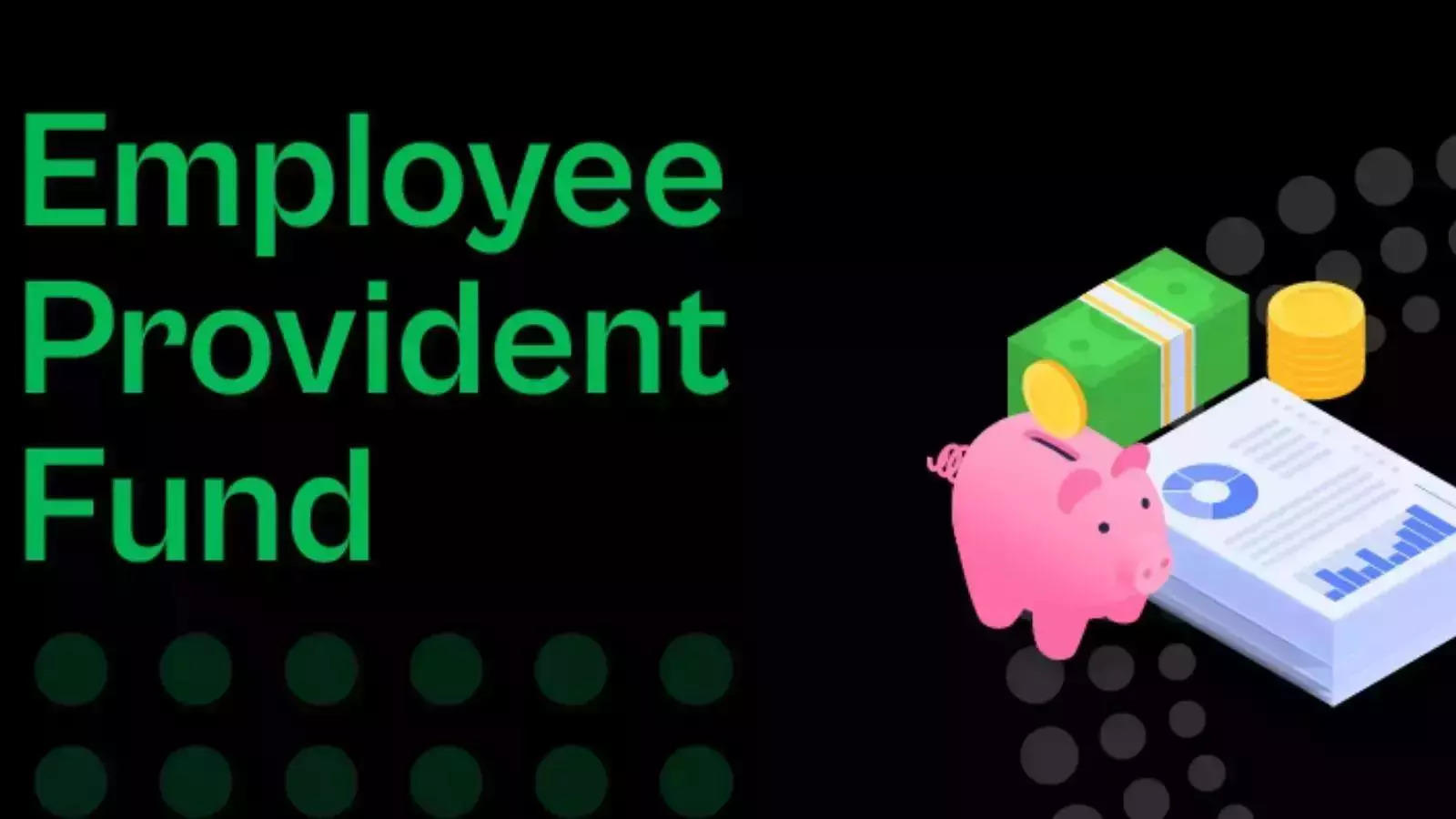The Employee Provident Fund (EPF) is a crucial financial tool that ensures employees have a stable post-retirement fund. Both employers and employees contribute 12% of the basic salary plus Dearness Allowance (DA) to the fund, helping employees build a significant retirement corpus. Managed by the Employees' Provident Fund Organisation ( EPFO ), EPF is an excellent savings plan for retirement, providing various schemes, an attractive interest rate, and accessible online services. Here's a detailed look at EPF and how it can benefit you.
Contributions by Employee and Employer
EPF requires equal contributions from both the employer and the employee. Each party contributes 12% of the employee's basic salary and dearness allowance. This pooled contribution grows steadily due to compounding interest, ensuring employees have a substantial amount by the time they retire.
For instance, on a salary of ₹21,000, starting contributions at 22 years of age, an employee can accumulate a retirement corpus of over ₹2 crore, thanks to the power of compounding and a 5% yearly salary hike.
EPF Benefits: A Pension and More
The most obvious benefit of EPF is retirement security. Once an employee retires, they receive a pension, allowing them to lead a financially independent life. But the benefits don't stop there. EPF also offers life insurance coverage through the Employees' Deposit Linked Insurance Scheme (EDLI), protecting the family of the employee in case of any unforeseen circumstances.
Moreover, the savings accumulated in EPF can be partially withdrawn for essential needs, including medical emergencies, education, marriage, or home renovation. In this sense, EPF acts as a safety net for various life stages.
The Current EPF Interest Rate
The interest rate on EPF is currently set at 8.15%. This rate, which is declared annually, is one of the reasons why EPF remains such a popular retirement savings scheme. The high interest rate, combined with the regular contributions made over an employee’s career, ensures that the corpus grows significantly over time.
How to Access EPF Services
The EPFO offers a robust online portal, making it easy for members to manage their EPF accounts from anywhere in the world. Employees can check their account balance, track contributions, and even initiate withdrawal claims through this portal. This accessibility ensures that EPF is a transparent and user-friendly savings plan for employees.
Schemes Offered Under EPFO
The EPFO provides three primary schemes
The Universal Account Number (UAN)
Every EPF member is assigned a Universal Account Number (UAN), a unique 12-digit identifier that remains constant throughout the employee’s working life, irrespective of job changes. The UAN makes it easier for employees to manage their EPF accounts, even when switching employers.
Calculating EPF Interest
The interest on EPF contributions is calculated monthly, but it is credited to the account at the end of the financial year. The monthly interest is computed by dividing the annual interest rate by 12. This interest calculation method, combined with compounding, ensures significant growth in the retirement corpus over time.
Withdrawals from EPF
EPF allows partial withdrawals for specific needs, including marriage, education, medical emergencies, or home renovation. Additionally, specially-abled individuals can withdraw EPF funds for their specific requirements. Withdrawals can be initiated online by submitting the necessary documents, such as a UAN, identity proof, and bank account details.
Documents Required for PF Withdrawal
When withdrawing from the EPF, you need to provide
An employee earning ₹21,000 per month and contributing to EPF starting at 22 years old can accumulate over ₹2 crore by retirement. Assuming a 5% annual hike in salary, the employee will contribute ₹45,05,546 over the years. With the interest rate of 8.25%, the accrued interest on this amount would be ₹1,56,30,084, bringing the total corpus to ₹2,01,35,630.
Conclusion: EPF as a Long-Term Wealth Builder
The EPF is one of the best financial tools for building a substantial retirement fund. By contributing consistently and taking advantage of the current 8.15% interest rate, employees can accumulate a significant corpus. The additional benefits of pension, insurance, and partial withdrawals make it a versatile and secure savings plan for the future.
Contributions by Employee and Employer
EPF requires equal contributions from both the employer and the employee. Each party contributes 12% of the employee's basic salary and dearness allowance. This pooled contribution grows steadily due to compounding interest, ensuring employees have a substantial amount by the time they retire.
For instance, on a salary of ₹21,000, starting contributions at 22 years of age, an employee can accumulate a retirement corpus of over ₹2 crore, thanks to the power of compounding and a 5% yearly salary hike.
EPF Benefits: A Pension and More
The most obvious benefit of EPF is retirement security. Once an employee retires, they receive a pension, allowing them to lead a financially independent life. But the benefits don't stop there. EPF also offers life insurance coverage through the Employees' Deposit Linked Insurance Scheme (EDLI), protecting the family of the employee in case of any unforeseen circumstances.
Moreover, the savings accumulated in EPF can be partially withdrawn for essential needs, including medical emergencies, education, marriage, or home renovation. In this sense, EPF acts as a safety net for various life stages.
The Current EPF Interest Rate
The interest rate on EPF is currently set at 8.15%. This rate, which is declared annually, is one of the reasons why EPF remains such a popular retirement savings scheme. The high interest rate, combined with the regular contributions made over an employee’s career, ensures that the corpus grows significantly over time.
How to Access EPF Services
The EPFO offers a robust online portal, making it easy for members to manage their EPF accounts from anywhere in the world. Employees can check their account balance, track contributions, and even initiate withdrawal claims through this portal. This accessibility ensures that EPF is a transparent and user-friendly savings plan for employees.
Schemes Offered Under EPFO
The EPFO provides three primary schemes
- Employees' Provident Funds Scheme (EPF) 1952: The main provident fund scheme for salaried employees.
- Employees' Pension Scheme (EPS) 1995: A pension scheme for employees upon retirement.
- Employees' Deposit Linked Insurance Scheme (EDLI) 1976: A life insurance scheme offering coverage in case of an employee’s demise.
The Universal Account Number (UAN)
Every EPF member is assigned a Universal Account Number (UAN), a unique 12-digit identifier that remains constant throughout the employee’s working life, irrespective of job changes. The UAN makes it easier for employees to manage their EPF accounts, even when switching employers.
Calculating EPF Interest
The interest on EPF contributions is calculated monthly, but it is credited to the account at the end of the financial year. The monthly interest is computed by dividing the annual interest rate by 12. This interest calculation method, combined with compounding, ensures significant growth in the retirement corpus over time.
Withdrawals from EPF
EPF allows partial withdrawals for specific needs, including marriage, education, medical emergencies, or home renovation. Additionally, specially-abled individuals can withdraw EPF funds for their specific requirements. Withdrawals can be initiated online by submitting the necessary documents, such as a UAN, identity proof, and bank account details.
Documents Required for PF Withdrawal
When withdrawing from the EPF, you need to provide
- Your UAN (Universal Account Number)
- Identity and address proof
- Bank account details, including a cancelled cheque with the IFSC code and account number
An employee earning ₹21,000 per month and contributing to EPF starting at 22 years old can accumulate over ₹2 crore by retirement. Assuming a 5% annual hike in salary, the employee will contribute ₹45,05,546 over the years. With the interest rate of 8.25%, the accrued interest on this amount would be ₹1,56,30,084, bringing the total corpus to ₹2,01,35,630.
Conclusion: EPF as a Long-Term Wealth Builder
The EPF is one of the best financial tools for building a substantial retirement fund. By contributing consistently and taking advantage of the current 8.15% interest rate, employees can accumulate a significant corpus. The additional benefits of pension, insurance, and partial withdrawals make it a versatile and secure savings plan for the future.
You may also like

Union Minister Ashwini Vaishnaw inaugurates sonik integrated logistics hub and flags off two new door-to-door freight and parcel services

Lokah Chapter 1: Chandra OTT release announced: When and where to watch Kalyani Priyadarshan's Malayalam superhit movie

Professor Himanshu Kumar Chaturvedi assumes charge as Director of Indian Institute of Advanced Study

Ashley Tellis arrested on Oct 11, probe underway: US State Department (IANS exclusive)

Kerala IT professional death: Minister Sivankutty seeks probe into harassment allegations







